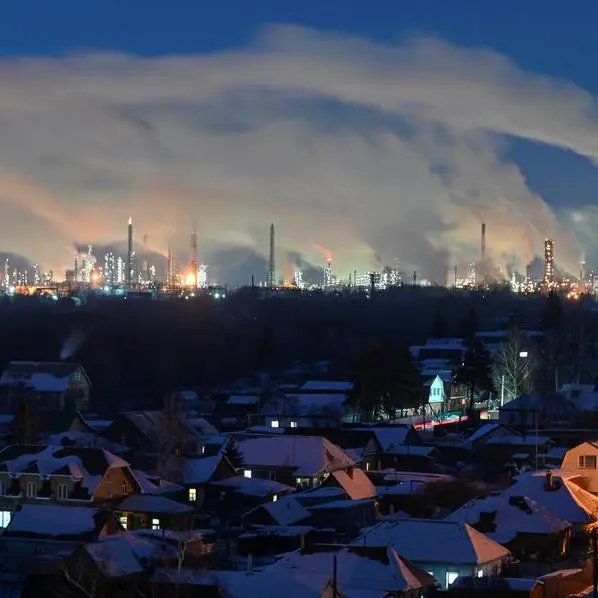PHOTO
Image used for illustrative purpose. A worker processes nickel at a nickel smelter of PT Vale Tbk, near Sorowako, Indonesia's Sulawesi island, January 8, 2014. REUTERS/Yusuf Ahmad Image used for illustrative purpose.
LONDON - The London Metal Exchange (LME) is showing signs of a full recovery from its nickel debacle in 2022.
Average daily volumes reached 710,000 lots in December, up 54% year-on-year and the strongest monthly trading activity since March 2020.
Volumes in both November and December exceeded those of February 2022, the month before the exchange suspended nickel trading and took the highly unusual step of cancelling trades.
That controversial decision was vindicated by the High Court in London in November, an important step in restoring confidence in the 146-year old exchange.
The focus on recovery, however, has come at a cost. With the notable exception of its Turkish steel scrap contract, new products are struggling to gain traction.
Which is likely to be why the LME, owned by Hong Kong Exchanges and Clearing (HKEx) is looking at cross-listing Shanghai Futures Exchange (ShFE) contracts.
BASE METALS BOUNCE BACK
The LME's average daily volumes grew by 11.0% year-on-year in 2023, the first year of expanding activity since 2018.
The strongest performer was the lead contract, which saw turnover jump by 48% relative to 2022. Lead is not the most glamorous of the base metals pack and the price did little more than trade sideways for most of last year.
But the heavy metal received a liquidity booster after its inclusion in the Bloomberg Commodity Index from the start of 2023.
The second strongest performer last year was the tin contract, which registered year-on-year growth of 26%. Indeed, volumes of 1.25 million lots were the highest since 2016.
It seems that tin, historically the least liquid of the LME's core base metals portfolio, is finally gaining attention for its critical use in circuit-board soldering.
Nickel, unsurprisingly, lagged the broader recovery. Full-year volumes were down by 13% in 2023 but picked up significantly in the fourth quarter, when average daily turnover of 50,238 contracts was up by 47% year-on-year.
It's worth noting that the ShFE nickel contract, which was also briefly suspended in March 2022, bounced back equally strongly over the same time-frame with full-year volumes up 26% on 2022.
COMPETITION
Last year's trading recovery was largely confined to the LME's traditional base metal suite.
Activity in both its aluminium alloy contracts continued to shrink and volumes in the two aluminium premium contracts were a fraction of those traded on U.S. rival CME.
The CME's own primary aluminium contract is still smaller than that in London but is rapidly building momentum with volumes nearly tripling last year.
The increase in activity has been accompanied by rising stocks, which more than doubled last year and currently total 48,147 metric tons.
CME has also grabbed liquidity in the battery metals space. While the LME's cobalt contract hasn't traded since March 2023 and the lithium contract hasn't traded at all, CME's cobalt volumes grew by 68% and its lithium contract saw activity surge from just 468 tons in 2022 to over 20,000.
The U.S. exchange launched both cobalt and lithium options in December and a molybdenum contract in March, the latter notching up turnover of 1,701 lots by the end of December. The LME's molybdenum contract last traded in 2016.
COOPERATION
The LME has had more success with its foray into steel trading, volumes rising by 65% last year relative to 2022.
However, performance across the exchange's seven ferrous products is highly mixed.
The stand-out is the Turkish scrap contract, where volumes jumped by 95% to 777,556 lots, accounting for 88% of the LME's total ferrous trade.
The newer Indian and Taiwanese scrap contracts have yet to reach that level of liquidity with full-year volumes of 1,080 and 1,481 lots respectively.
The rebar and Chinese hot-rolled coil (HRC) contracts were the second and third most actively traded steel products last year but both U.S. and European HRC contracts failed to trade at all despite potential arbitrage with the CME's equivalent products.
Steel seems to be top of the list of a potential collaboration with the Shanghai exchange, judging by comments made by LME chief executive Matthew Chamberlain at the World Economic Forum annual meeting in Davos.
ShFE's steel rebar contract is a monster. Even though volumes slid by 20% in 2022 and by another 4% in 2023, activity still amounted to a massive 502 million lots last year.
While rebar is used in construction, a persistent weak spot in China's economy, HRC is used more in the manufacturing sector and ShFE volumes grew by 7% last year.
The newer stainless steel contract, launched in 2019, grew at a faster 20% pace, with volumes hitting 43 million lots.
It's not hard to see the attraction to the LME of cross-listing ShFE steel products.
The nickel market blow-out in 2022 created common ground between the London and Shanghai metal exchanges and the two have been working closely to restore trust in their collective nickel pricing model.
Cross-listing ShFE products in London could be a win-win situation for both, although any go-ahead will be dependent on Chinese regulators.
It would be an interesting development for HKEx, which has tried to leverage the LME's international brand into its own cross-border offering.
However, liquidity in its LME-referenced mini-contracts evaporated last year, volumes collapsing from 14,000 in 2022 to just 10.
The Hong Kong exchange has struggled to replicate its success in connecting mainland Chinese and international markets in bonds and stocks in the commodities space.
It looks as if London and Shanghai are going to connect themselves.
The opinions expressed here are those of the author, a columnist for Reuters.
(Editing by Jane Merriman)





















